Diptera.info :: Identification queries :: Diptera (adults)
Who is here? 1 guest(s)
Page 2 of 2: 12
|
|
Bombylius
|
|
| Gordon Jar |
Posted on 23-04-2006 19:12
|
|
Member Location: East Sussex, England Posts: 209 Joined: 09.10.05 |
I found B. major at two sites in East Sussex, England on 01/04/06. At both sites there were numerous Andrena flavipes. Gordon |
|
|
|
| Perseus |
Posted on 23-04-2006 19:27
|
|
Member Location: Posts: 55 Joined: 11.08.05 |
Gordon Jar wrote: I found B. major at two sites in East Sussex, England on 01/04/06. At both sites there were numerous Andrena flavipes. Gordon What is your area please? Coastal? Rye (a guess)? |
|
|
|
| Gordon Jar |
Posted on 23-04-2006 20:19
|
|
Member Location: East Sussex, England Posts: 209 Joined: 09.10.05 |
My area is Peasmarsh about 3 miles inland from Rye Gordon Edited by Gordon Jar on 23-04-2006 20:21 |
|
|
|
| Susan R Walter |
Posted on 24-04-2006 13:18
|
|
Member Location: Touraine du Sud, central France Posts: 1799 Joined: 14.01.06 |
I have just got back from central Australia (Northern Territory) and one of the outstanding things from my trip were the numbers of beeflies, particularly in the arid areas, but some also in the tropics. There were at least 5 different species flying, and I think probably more, ranging in size from 5mm to 20mm. When I have sorted my photos out I will post any that are good enough for a public airing.
Susan |
| Perseus |
Posted on 30-04-2006 10:26
|
|
Member Location: Posts: 55 Joined: 11.08.05 |
In gardens one plant B. major seems to be attracted to is Spotted Deadnettle, Lamium maculatum but not as much as Rhingia hoverflies are.
Edited by Perseus on 30-04-2006 10:27 |
|
|
|
| Perseus |
Posted on 30-04-2006 10:31
|
|
Member Location: Posts: 55 Joined: 11.08.05 |
Do we know the preferred bees that B.major larvae parasitize on please? Or how to obtain T.A. Chapman's (1878) article in the Entomologist's Monthly Magazine, vol.14, pp.196-208. Edited by Perseus on 30-04-2006 10:42 |
|
|
|
| Susan R Walter |
Posted on 02-05-2006 22:19
|
|
Member Location: Touraine du Sud, central France Posts: 1799 Joined: 14.01.06 |
Andy I notice that Stubbs is fairly non-committal about Bombylid hosts and lists a number of solitary bee genera as possible hosts and points out that solitary bees tend to all nest in the same area and it can be very difficult distinguishing which species is being parasitised and much of the evidence is circumstantial. He also points out that the identification of the host can be questionable too. Susan |
| Susan R Walter |
Posted on 04-05-2006 13:44
|
|
Member Location: Touraine du Sud, central France Posts: 1799 Joined: 14.01.06 |
Peter Harvey, Essex County Recorder, with a particular interest in Andrena, says he absolutely agrees with Alan Stubbs' comments. He also told me that there has only been one record of B discolor in Essex. So far this year, I have only seen one beefly in my own garden, B major, on 30.4.06. I have at least 5 species of mining bee Andrena and at least one Microandrena currently flying. Terry Lyle, Education Officer for the Environment Trust, Tower Hamlets, tells me that he has had large numbers of beeflies this year. They are particularly attracted to his patch of dwarf comfrey (Symphytum) and the wallflowers (Erysimum) in the planters at the entrance of the park. My experience, from my own garden, is that they love Honesty (Lunaria)
Susan |
| Perseus |
Posted on 16-05-2006 18:08
|
|
Member Location: Posts: 55 Joined: 11.08.05 |
The hosts are difficult. I have identified two species Andrena flavipes is common. Occasionally, I have identified (not without difficulty) Andrena dorsata but none are that close to the bee-flies. Except on one occasion they were. Andrena flavipes and Nomada fucata were easier to match locations. The association of B. discolor with Ground Ivy was correlated. Possibly also B. major. Edited by Perseus on 16-05-2006 18:08 |
|
|
|
| Gordon Jar |
Posted on 16-05-2006 18:59
|
|
Member Location: East Sussex, England Posts: 209 Joined: 09.10.05 |
I have had a number of sitings of B.discolor this year and although there was plenty of 'Ground Ivy' around, on no occasion did I see them feeding on it. The only flower I did see them feeding on was Primrose (Primula vulgaris). In my garden they fed on Polyanthus. Gordon |
|
|
|
| Perseus |
Posted on 20-06-2006 10:28
|
|
Member Location: Posts: 55 Joined: 11.08.05 |
Cross ref: http://www.diptera.info/forum/viewthread.php?forum_id=5&thread_id=8 B. ater (not on the Uk list) |
|
|
|
| Perseus |
Posted on 28-06-2006 11:02
|
|
Member Location: Posts: 55 Joined: 11.08.05 |
Gordon Jar wrote: I have had a number of sitings of B.discolor this year and although there was plenty of 'Ground Ivy' around, on no occasion did I see them feeding on it. The only flower I did see them feeding on was Primrose (Primula vulgaris). In my garden they fed on Polyanthus. Gordon I did NOT see B. discolor feeding on Ground Ivy either. It was not even in flower at the time. However, it was in the area which amounts to a large patch of Ground Ivy seen flowering in quantity a few days ago. Ground Ivy begins to flower in small quantities at the beginning of April when it was seen. |
|
|
|
| brian reily |
Posted on 07-05-2007 14:41
|
|
Member Location: Posts: 41 Joined: 08.08.06 |
... you know now that i think about it... ive never actualy seen a live bee-fly confused... as usual |
|
|
|
| Kahis |
Posted on 07-05-2007 14:49
|
|
Member Location: Helsinki, Finland Posts: 1999 Joined: 02.09.04 |
Bombylius females are rather careless mothers. They'll oviposit into any suitable-looking round hole in the ground - bee nests or lab tubes buried in sand are readily accepted. I would be surprised if they can afford to be very host-specific given the ovipositing pattern.
Kahis |
| Perseus |
Posted on 07-04-2009 10:05
|
|
Member Location: Posts: 55 Joined: 11.08.05 |
Hello, 29 March 2009 An unexpected treat was three or four individual Dotted Bee-flies, Bombylius discolor, using their long feeding tubes to take nectar on a large patch of Ground Ivy, Glechoma hederacea on Lancing Ring. This is a notable record of a rarely recorded fly and is probably the first for Lancing. Bombylius discolor is a declining BAP (Biodiversity Action Plan) species. In Great Britain this species is classified as Nationally Scarce. Report by Ray Hamblett on the new Friends of Lancing Ring web pages. http://www.glaucus.org.uk/March2009.html http://folr.wordpress.com/ 5 April 2009 There were frequent Dotted Bee-flies, Bombylius discolor, hovering in mid-air and visiting Ground Ivy on the Coastal Link Cyclepath near Shoreham Cement Works, Upper Beeding. The larvae of the Dotted Bee-fly are parasites of solitary bees with the host species identified of Andrena flavipes and Andrena cineraria. Nomada fucata (recorded on Mill Hill) is a cleptoparasitoid of Andrena flavipes. Further Information Adur Valley Nature Notes http://www.glaucus.org.uk/Flies2006.html#Dotted Cheers Andy Horton glaucus@hotmail.com Adur Valley Nature Notes http://www.glaucus.org.uk/Adur2009.html Adur Valley Nature Notes: April 2009 http://www.glaucus.org.uk/April2009.html |
|
|
|
Page 2 of 2: 12
| Jump to Forum: |


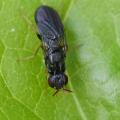



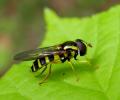
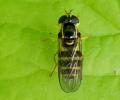

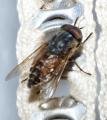
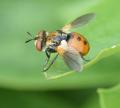



 but don't see the image in the post.
but don't see the image in the post.
